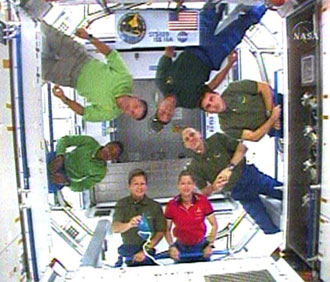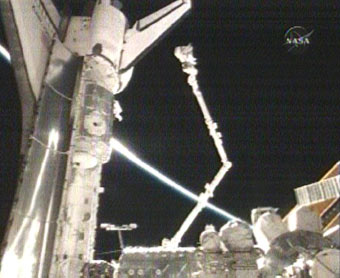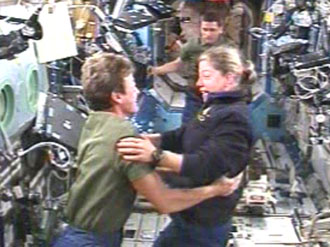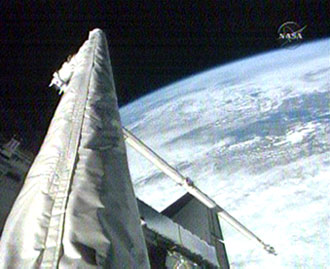 STS-120
STS-120
Report #10
2 p.m. CDT Saturday, Oct. 27, 2007
Mission Control Center, Houston, Texas
HOUSTON – Astronauts at the International Space Station now have a little more room to float around in – 2,666 cubic feet more, to be exact.
The hatch of Node 2 – or Harmony, as the module was named by school children – was opened at 7:24 a.m. CDT today. Station Commander Peggy Whitson and Mission Specialist Paolo Nespoli – who is from Italy, where the module was built – were the first to enter, and took advantage of the opportunity to remark on the appropriateness of its name.
“We think Harmony is a very good name for this module,” Whitson said, “because it represents the culmination of a lot of international partner work and will allow international partner modules to be added on.”
Crew members spent part of today hooking Harmony systems up for use. Rick LaBrode, lead shuttle flight director, said it was going well.
“It’s beautiful,” LaBrode said. “Bright, shiny. The report from the crew is that it’s as clean as can be. Perfect shape.”
The module won’t be ready for full use while space shuttle Discovery is at the station. It’s been installed in a temporary location because the shuttle’s docking port is currently situated at its final location. The station crew will move the docking port and Harmony, and finish bringing all of its systems online after the shuttle leaves.
After the module’s ventilation system was up and running, some crew members were able to take time out from their work for interviews with a few television stations. They answered questions on subjects ranging from the challenges of the missions to the historic significance of having Whitson, the first female commander of the station, in space at the same time as Pam Melroy, the second female commander for the shuttle.
“We hope to see a woman leading a mission to Mars someday,” Melroy said.
The other major tasks for the day centered around preparations for the mission’s second spacewalk on Sunday. Mission Specialist Scott Parazynski and the station’s newly arrived flight engineer, Daniel Tani, are scheduled to leave the station at 4:58 a.m. They’ll finish disconnecting the Port 6, or P6, truss segment from the top of the station, where it was installed temporarily in 2000, and help direct robotic arm operators as they move the solar array section to its permanent home on the end of the port truss.
In addition, mission managers also have asked Tani to take a look at a rotary joint used to rotate solar arrays on the starboard side of the truss. The joint has been showing some increased friction lately, and mission managers hope Tani may be able to identify the cause.
The next STS-120 status report will be issued Sunday morning or earlier if events warrant.



